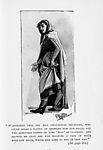 Harold Piffard Drawing
Harold Piffard Drawing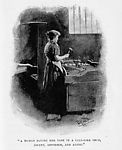 Harold Piffard Drawing
Harold Piffard Drawing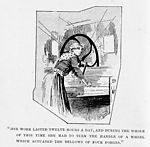 Harold Piffard Drawing
Harold Piffard Drawing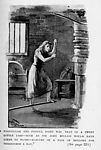 Harold Piffard Drawing
Harold Piffard Drawing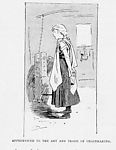 Harold Piffard Drawing
Harold Piffard Drawing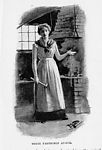 Harold Piffard Drawing
Harold Piffard Drawing

“A long cry of indignation is echoing today through Europe in consequence of the revelations made by Mr. Sherard.” (L’intransigeant, Paris)
Robert Harborough Sherard was born in London on 3rd December 1861, the fourth child of the Reverend Bennet Sherard Calcraft Kennedy. His father was the illegitimate son of the sixth and last Earl of Harborough, and his mother, Jane Stanley Wordsworth, granddaughter of the poet. In 1880 he went up to New College, Oxford, but after a quarrel with his father, who cut him off from the expected family inheritance, was forced to leave for financial reasons. At this time he dropped the surname Kennedy. He left for Europe and later enrolled at the University of Bonn to study law and oriental languages, but again had to leave for lack of money. At the age of twenty he settled in Paris to earn his living as a journalist and novelist.
Sherard supported himself mostly from journalism, contributing articles to papers in France, England and America. He was also a prolific writer of novels, biographies and social commentaries, publishing 33 works in total. His social investigations, during which he lived with the poor and studied their conditions, resulted in works such as "The White Slaves of England "(l897).
Sir Cyril Arthur Pearson founded and directed the periodicals "Pearson's Weekly", "Pearson's Magazine", "The Lady's Magazine" and the "London Daily Express" (1900). Eventually he controlled a number of newspapers in various English cities. It was in Pearson’s magazine that “The White Slaves of England” was first published, in 1896, in serial form. Later, Robert Sherard praised Sir Cyril for his courage in publishing the articles: “Sympathetic from the first to our poor friends, he boldly faced the odium, which might have been aroused against him in the ‘classes’ by lending his magazine to the purposes of these arraignments. His was the risk, his was the courage, and his should be the honour”.
Sherard’s investigations had taken him to the Alkali workers of Widnes and St. Helens, the Nail-makers of Bromsgrove, the Slipper-makers and Tailors of Leeds, the Wool-combers of Bradford, the White-lead workers of Newcastle and the Chain-makers of Cradley Heath. These were just some of the industries that had been placed under the cloud of being “sweated” industries.
In 1890 the House of Lords Select Committee on the Sweating System had produced its report following the work done by John Burnett. With regard to the Chain-making industry, the Committee stated: “The facts brought out by the witnesses show that a hard week’s work, averaging twelve hours a day, for five days out of the week, provides no more than a bare subsistence for the men or women engaged in it.”
However, in their conclusion to the report on all the sweated trades, the Committee said that legislation had already reached the limit up to which it could be effective. It went on to say that bringing matters to the public attention, and leaving things to public judgement, could bring about change.
Stimulated by the work of the Reverend Harold Rylett, who in 1889 had carried out an investigation of the nail and chain-making industries, and had found that nothing had changed since the visits by members of the Select Committee, Robert Sherard carried out his own investigations. Accompanied by Mr James Smith, Secretary of the Chain-makers' Union, and the renowned artist Harold Piffard, Sherard set forth.
His technique was not to knock at the front door of a workshop, but to climb over the back wall, as his motives would not have been welcomed by the masters. Once inside he spent his time talking to the workers, asking about their conditions, gaining an intimate understanding of how they attempted to make ends meet. He would also visit them in their homes, or in public houses, wherever they felt comfortable about revealing the day to day struggle for survival. Piffard, meanwhile, would sketch what he saw, producing a series of illustrations, that were guaranteed to pluck at the heart-strings of the middle-classes.
Sherard was careful to reassure the workers that their anonymity would be protected, as they were afraid to come forward for fear of recriminations by the masters. Using his eyes and ears to bear witness to their conditions, Sherard chronicled their lives, not just the working conditions. What he found made him realize that nothing had changed since the House of Lords Select Committee on the Sweating System had made its report in 1890.
Sherard’s articles, after appearing in "Pearson’s Magazine", were published as a book in 1897. In 1898 the “White Slaves of England” was re-printed, and Sherard wrote an appendix by way of updating readers with events that had taken place since publication. He told of intimidation and threats he had received from those who disputed his findings, obviously because their interests were threatened. He told of how it had been suggested to him, that those he had interviewed had been “kidding” him about their conditions, or making things up out of resentment for the interference of someone from a different class. Sherard put all such claims aside, and asserted that what he had written was a simple and honest report on the evidence his own eyes and ears had witnessed.
In his final conclusion to the 1898 re-print, Sherard referred back to the 1890 House of Lords report and wrote: “We are now in March 1898, and matters are today worse than they were eight years ago. Such, at least, is the opinion I have formed by my investigations. And eight years hence, matters will be still worse unless other remedies are found, than appeals to the stony heart of capital. It is a pity that this should be so”.
Rollover the captions in the box to see the available images in thumbnail format, click the caption to see the full-size image
| Reference: | 717 |
| Keywords: | |
| Archive Ref: | |
| Updated: | Mon 25 Jun 2007 - 1 |
| Interpretation written by | Louis Howe |
| Author's organisation | Curatorial |
| Organisation's website |